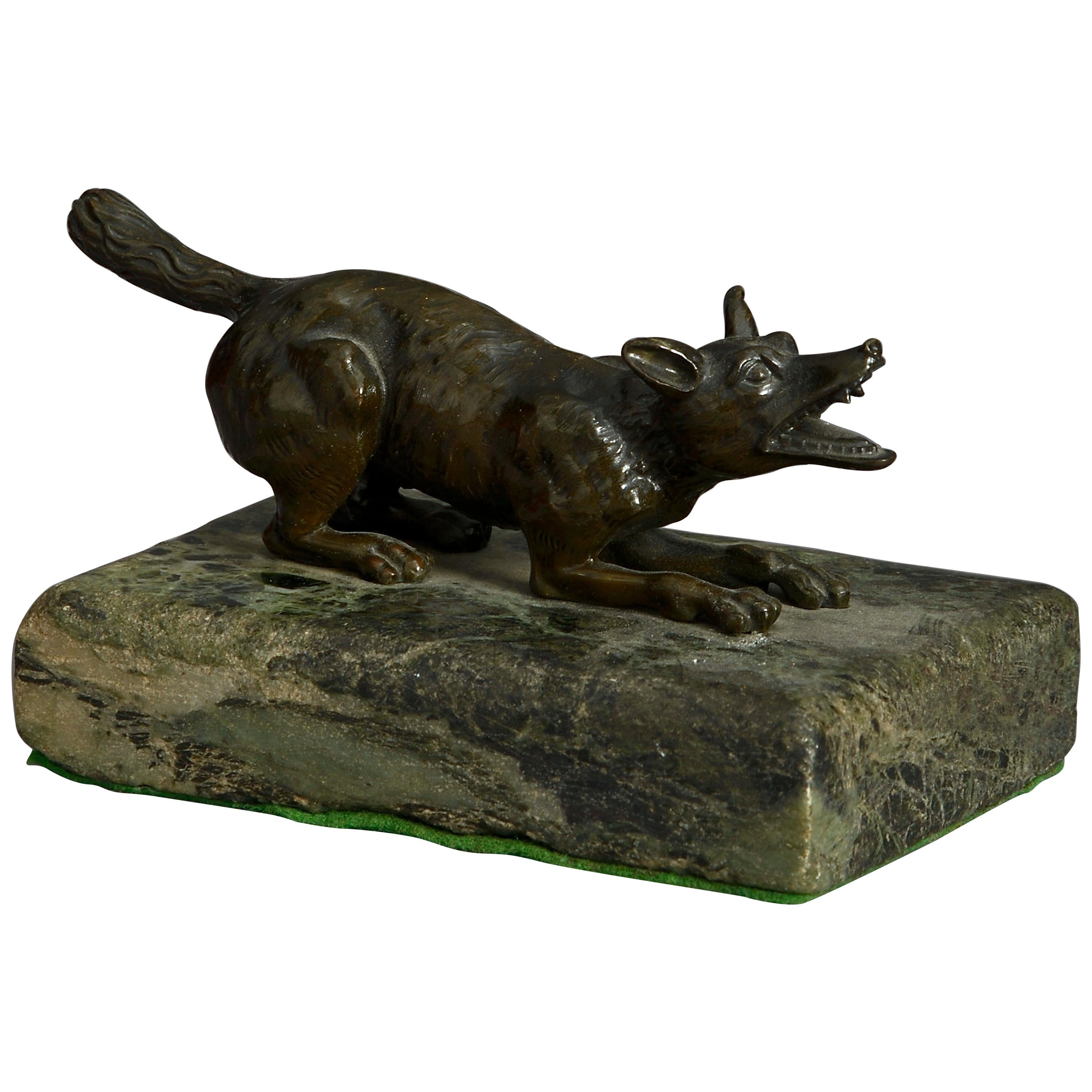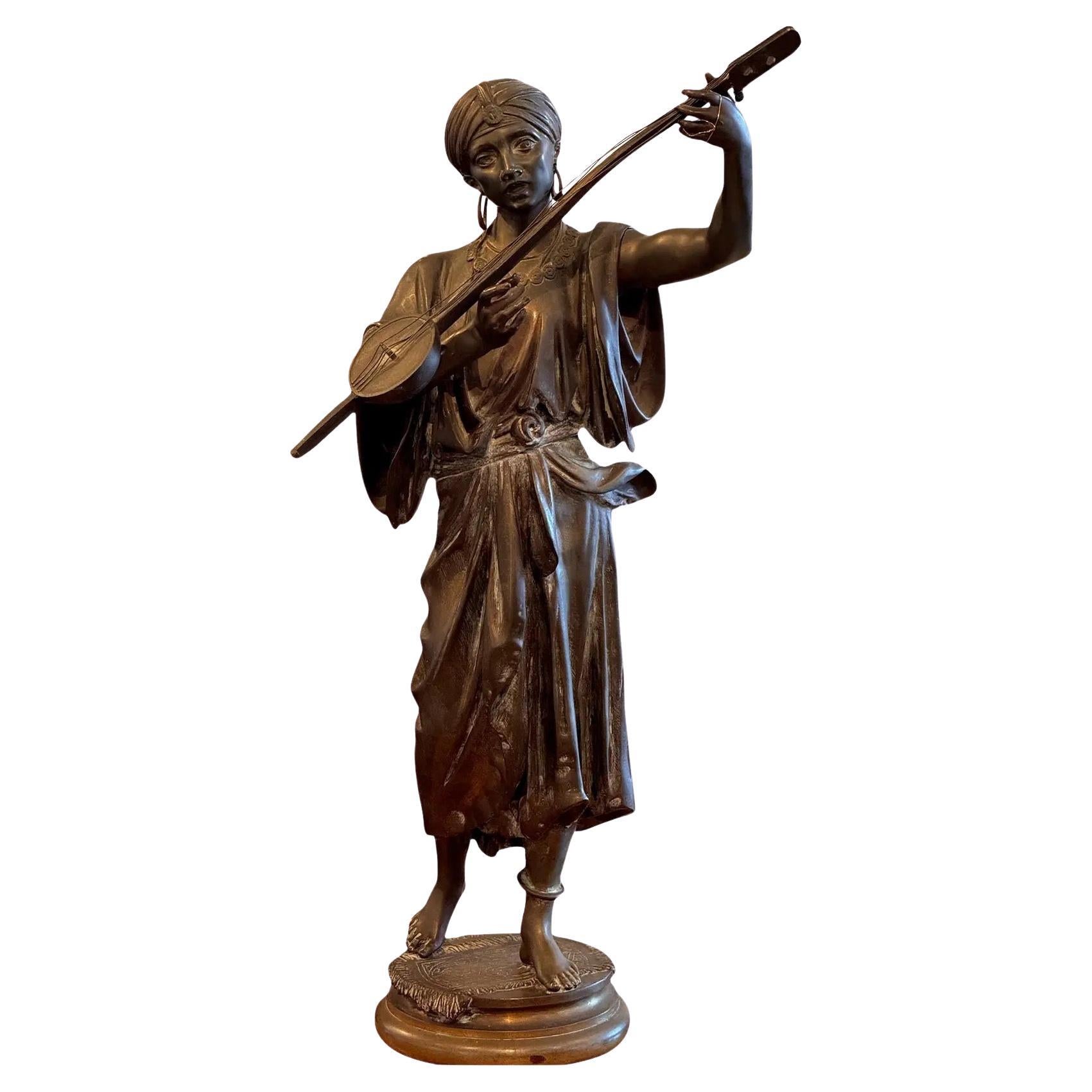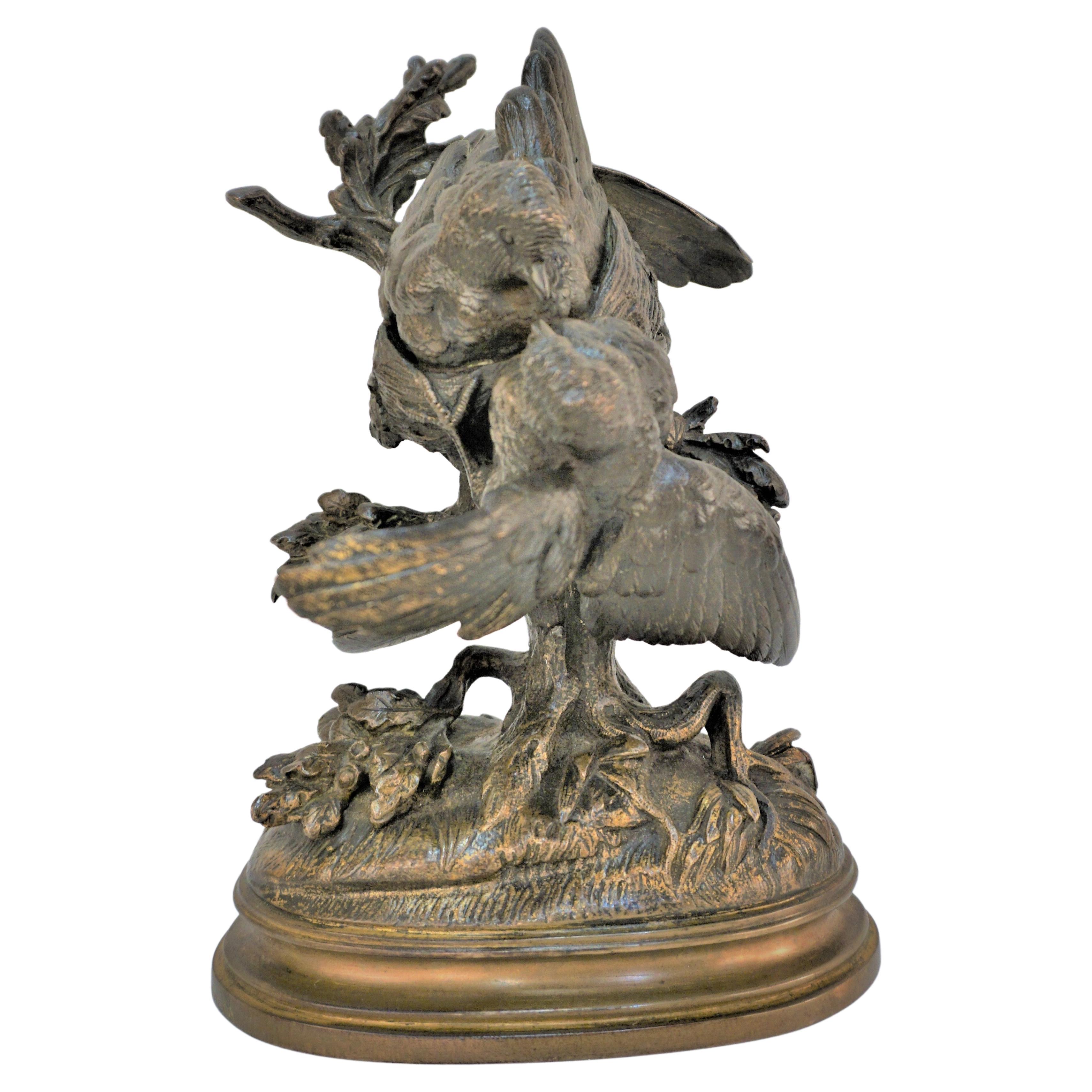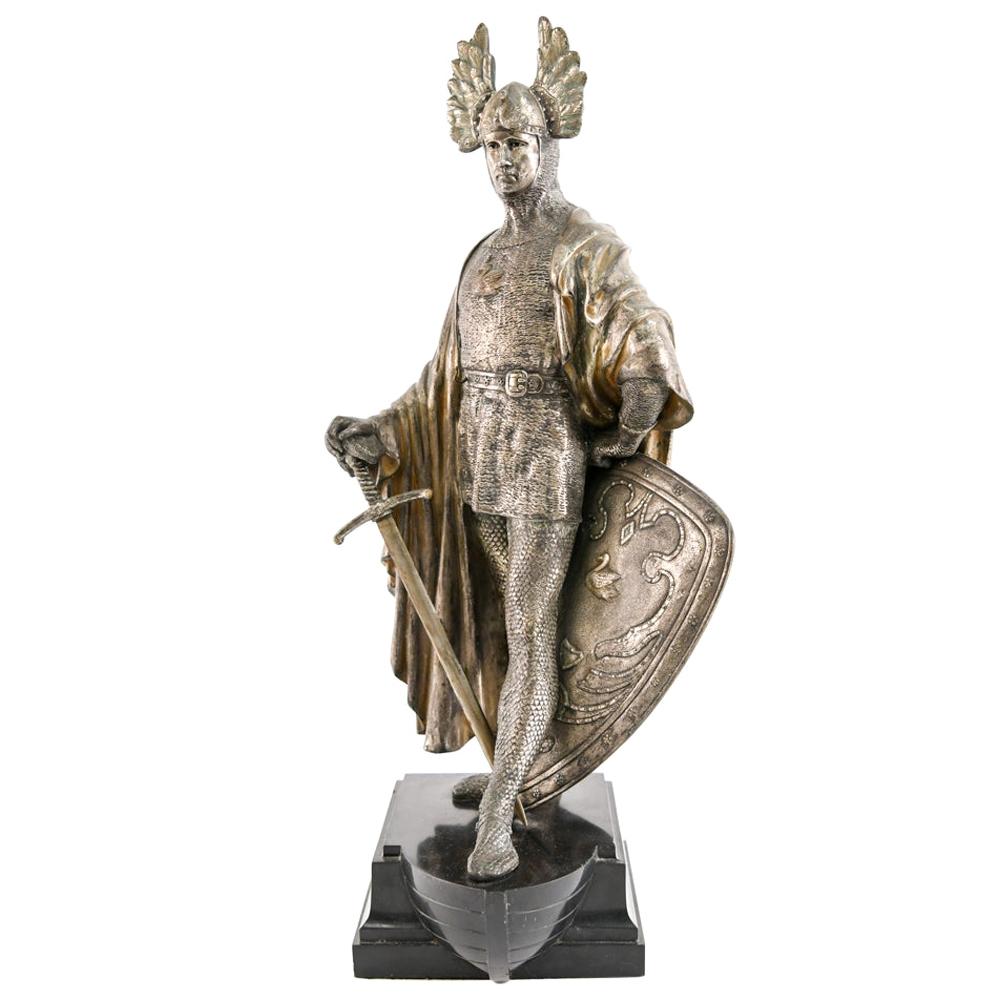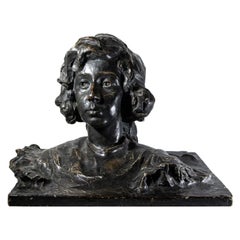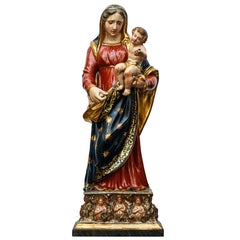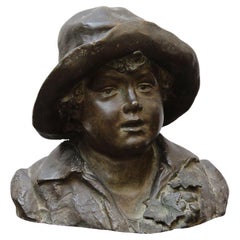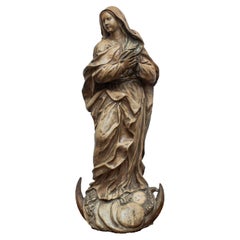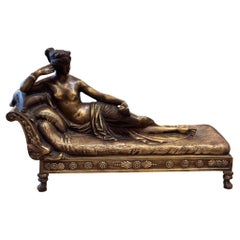Items Similar to 19th Century Cesare Beccaria Bronze Sculpture
Want more images or videos?
Request additional images or videos from the seller
1 of 5
19th Century Cesare Beccaria Bronze Sculpture
About the Item
19th Century.
Cesare Beccaria
Bronze, 49 x 13 x 15 cm
The bronze statue examined faithfully reproduces the famous Milanese monument by Giuseppe Grandi (1843-1894) dedicated to Cesare Beccaria. The work, from the top of a high base in white Montorfano granite, dominates the homonymous Milanese square, a sad stage for executions at the time of Austrian rule, in a bronze copy of 1914 to replace the original stone statue which already at the beginning of the new century showed serious signs of deterioration. The marble became part of the collections of the Gallery of Modern Art and is now located inside the Palazzo di Giustizia in Milan. The initiative regarding the erection of a monument dedicated to Cesare Beccaria originates in 1865, in support of the proposed abolition of the death penalty, from the pages of the Gray Chronicle, the magazine of the Milanese scapigliatura directed by Cletto Arrighi. In 1868 Giuseppe Grandi took part in the competition for the monument. The commission decided, in the second selection restricted to only two sketches, to assign the realization of the sculpture to Grandi's project. The Monument to Cesare Beccaria was completed, with some changes compared to the original sketch, in December 1870 and was inaugurated on March 18, 1871 in the square of the same name. The sculpture portrays Cesare Bonesana-Beccaria, the Italian jurist, philosopher, economist and scholar, a leading figure of the Enlightenment linked to the Milanese intellectual circles, Marquis of Gualdrasco and Villareggio (1738-1794), represented in an everyday attitude, with one arm behind the back, the other in the chest. His main work, the treatise on crimes and penalties, a political and juridical analysis against the death penalty and torture, conducted on the basis of rationalism and pragmatism, inspired, among other things, the new penal code wanted by the Grand Duke Pietro Leopoldo of Tuscany. The references about the abolition of the death penalty are reiterated in the monument both by the extract of the aforementioned work by Beccaria, celebrated in its centenary of the 1764 publication, shown on the south-west plaque, and through the allegorical bas-reliefs in bronze representing Civilization which bears the attributes of Justice, seated on a large bench in an austere attitude, and Time, which rises in flight, covering its face, over a landscape strewn with death and destruction. In Beccaria's portrait the surface of the bronze is enlivened by a strong chiaroscuro which will then be accentuated in the later works by Grandi also thanks to the proximity and comparison with the painters Tranquillo Cremona and Daniele Ranzoni, protagonists of the Milanese Scapigliatura. As in the paintings of Cremona and Ranzoni, also in the sculptures of Grandi the outlines seem to flake under the light, opening up new expressive possibilities that will be collected and carried forward by the younger artists, first of all Medardo Rosso.
- Dimensions:Height: 19.3 in (49 cm)Width: 5.91 in (15 cm)Depth: 5.12 in (13 cm)
- Materials and Techniques:Bronze,Polished
- Place of Origin:
- Period:
- Date of Manufacture:19th Century
- Condition:Wear consistent with age and use.
- Seller Location:Milan, IT
- Reference Number:1stDibs: LU5918226095882
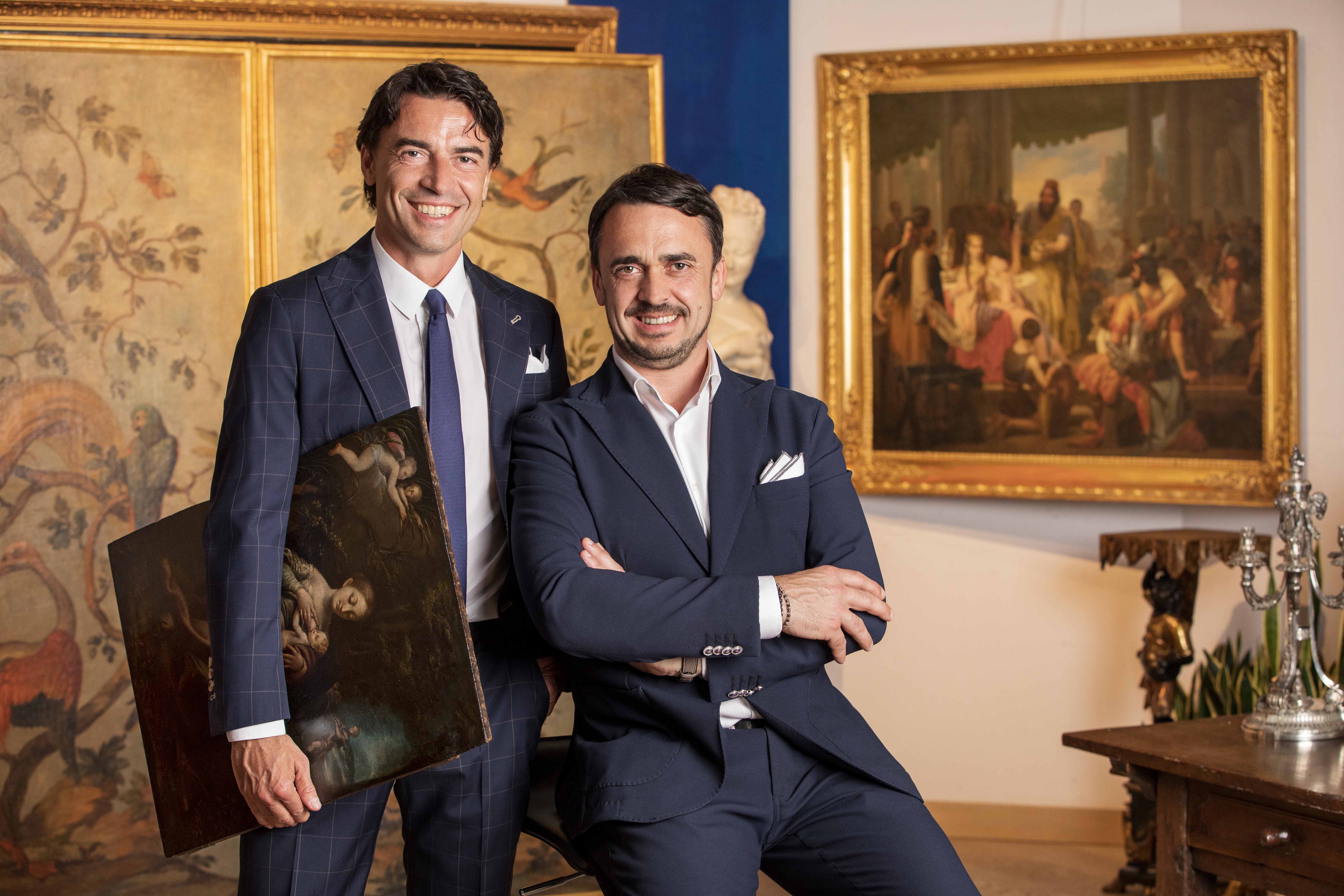
About the Seller
5.0
Vetted Professional Seller
Every seller passes strict standards for authenticity and reliability
Established in 2000
1stDibs seller since 2021
29 sales on 1stDibs
Typical response time: 21 hours
- ShippingRetrieving quote...Shipping from: Milan, Italy
- Return Policy
Authenticity Guarantee
In the unlikely event there’s an issue with an item’s authenticity, contact us within 1 year for a full refund. DetailsMoney-Back Guarantee
If your item is not as described, is damaged in transit, or does not arrive, contact us within 7 days for a full refund. Details24-Hour Cancellation
You have a 24-hour grace period in which to reconsider your purchase, with no questions asked.Vetted Professional Sellers
Our world-class sellers must adhere to strict standards for service and quality, maintaining the integrity of our listings.Price-Match Guarantee
If you find that a seller listed the same item for a lower price elsewhere, we’ll match it.Trusted Global Delivery
Our best-in-class carrier network provides specialized shipping options worldwide, including custom delivery.More From This Seller
View All19th Century Young Woman Portrait Plaster Sculpture
Located in Milan, IT
Nineteenth century
Young woman portrait
Measures: Plaster, 50 x 40 x H 40 cm
Dated 10 - 1 - MCMI
The emergence of a "disheveled manner" in sculpture is affirmed since the 1880s with Giuseppe Grandi, author of the Monument to the Five Days of Milan, Ernesto Bazzaro, Paolo Troubetzkoy...
Category
Antique 19th Century Italian Figurative Sculptures
Materials
Plaster
19th Century Madonna and Child with Souls in Purgatory Papier-Mache Sculpture
Located in Milan, IT
First half of the 19th century
Madonna and Child with souls in Purgatory
Lacquered and gilded papier-mache with polychrome wooden base
cm 96.5 x 37.5 x 28
"At that time I asked the Lord Jesus: 'For whom do I still have to pray?'. Jesus answered me that the following night he would make me known for whom I had to pray. I saw the Custodian Angel, who ordered me to follow him. At a moment I found myself in a foggy place, invaded by fire and, in it, a huge crowd of suffering souls. These souls pray with great fervour, but without effectiveness for themselves: only we can help them. The flames that burned them, they did not touch me. My Guardian Angel did not abandon me for a moment. And I asked those souls what their greatest torment was. And they unanimously answered me that their greatest torment is the ardent desire of God. I read the Madonna who visited the souls of Purgatory. The souls call Mary 'Star of the Sea'. She brings them refreshment ".
(Diary of Sister Faustina Kowalska p. 11)
A Polish religious, Saint Faustina Kowalska (1905-1938) reinterpreted in the pages of her testimony the ancient role of the Virgin as savior and supporter of the souls of Purgatory. The Second Vatican Ecumenical Council established that, assumed into Heaven, the Mother of God should operate a continuous intercession in favor of those children waiting for Paradise who were in the place, quoted for the first time by Pope Gregory the Great...
Category
Antique Early 19th Century Italian Figurative Sculptures
Materials
Paper
20th Century Child with Hat Sculpture Bronze by Tommaso Campajola
By Thomas Campajola
Located in Milan, IT
Tommaso Campajola (Active in Naples between the 19th and 20th centuries)
Child with hat
Bronze, height 23 cm
Signed and dated 1932 on the back.
Category
20th Century Figurative Sculptures
Materials
Bronze
18th Century Immaculate Madonna Terracotta Sculpture
Located in Milan, IT
18th century
Immaculate Madonna
Terracotta, 53 x 22 x 20 cm
The work examined depicts the Virgin Mary treated according to the iconography of the Immaculate Virgin
The theme of the Immaculate Conception began to appear in artistic works ever since the debate began, which saw the Franciscans and the ramifications of the Benedictine Order lined up on one side, linked to the thought of Anselmo d'Aosta and Bonaventura da Bagnoregio, and on the other the Dominicans, linked to the discussion offered by Thomas Aquinas...
Category
Antique 18th Century European Figurative Sculptures
Materials
Terracotta
19th Century Pair of Desks with portraits of Petrarch and Leonardo Alabaster
Located in Milan, IT
19th century
Pair of desks with portraits of Petrarch and Leonardo
(2) Alabaster, 34 and 35 cm diam
The pair of alabaster discs features a central cameo with the effigy of Petrarch and Leonardo, probably part of a larger series that featured illustrious characters from Italian history. On the openwork frame of Petrarch there are portraits of some characters who face each other, combined for centuries, as can be seen from the shapes of the garments that span several centuries: from the thirteenth century, in which men wear long-tipped bonnets, to the fifteenth century and Sixteenth century, the two characters at the top, in the seventeenth century, with wide collars, up to the eighteenth century.
Francesco Petrarca (1304-1374) embodies the figure of the humanist intellectual par excellence, entirely dedicated to the study of Latin conceived as the only form of expression worthy of a man of letters, so as to serve any form of written communication, including letters and the reflection on himself witnessed in the Secretum. A personality made more complex by obsessive perfectionism, which led him to a continuous and infinite editing of the work which he also flaunted to consider as minor and which instead ensured him an undying fame among posterity, the Canzoniere. But the only aspect fixed in the collective imagination is that of the lover who idolizes the places where his ideal love blossomed...
Category
Antique 19th Century Italian Abstract Sculptures
Materials
Alabaster
Lion Marble sculpture from the 17th century
Located in Milan, IT
XVII Century
Lion
Marble, 30 x 43 x 25
The object under consideration is configured as a marble sculpture referable to the 17th century, characterized by a strong, visceral langua...
Category
Antique 17th Century Italian Animal Sculptures
Materials
Marble
You May Also Like
19th Century French Bronze Sculpture
Located in Atlanta, GA
This exquisite 19th-century French bronze sculpture captures the essence of rural life through the figure of a young peasant boy. The boy is depicted with a charming, rustic appeal,...
Category
Antique 19th Century Italian Figurative Sculptures
Materials
Metal, Bronze
19th Century Bronze Wolf Sculpture
Located in London, GB
A mid-19th century bronze sculpture of a wolf, set upon a green marble plinth.
Category
Antique 19th Century Italian Grand Tour Animal Sculptures
Materials
Marble, Bronze
19th Century Bronze Musician Sculpture
Located in Charlottesville, VA
A bronze figure of a musician. He is playing a string instrument.
Category
Antique 19th Century French Figurative Sculptures
Materials
Bronze
19th Century Bronze Venus Sculpture
Located in Charlottesville, VA
A reclining bronze of Venus. There is great detail in the casting.
Category
Antique 19th Century French Figurative Sculptures
Materials
Bronze
19th Century Bronze birds Sculpture
Located in Fairfax, VA
Bronze, (Societe De Bronze) Bring food to the nest for sitting bird on the egg.
Category
Antique 19th Century French Animal Sculptures
Materials
Bronze
19th Century Bronze Viking Sculpture
Located in Norwalk, CT
A very commanding appearance, this sculpture will be a focal point displayed in any room. It has a wonderful marble base carved in the manner of a ships bow,...
Category
Antique Late 19th Century Victorian Figurative Sculptures
Materials
Bronze
Recently Viewed
View AllMore Ways To Browse
Italian Sculpture Bench
White Sculpture Bench
High Relief Plaques
White Marble Bench
Marble Relief Portrait
Marble Bench Seat
Marble Seat Benches
Antique High Back Bench
Bas Relief Plaque
Bench With Faces
Bear Bench
Bear Benches
Link Bench
Italian Stone Bench
Antique Bronze Bench
White Stone Statue
Stone Bench With Back
Scholars Chest

